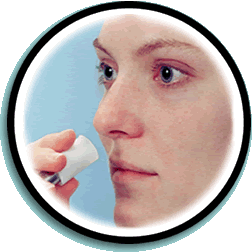 Twenty years before the development of the gas chromatograph, scientists studying human olfaction built instruments to deliver controlled doses of odorants to human subjects for two purposes: to study the human olfactory process and to qualify the sensory activity of chemicals. Soon after the publication of a seminal paper on gas chromatography (GC) in 1952, researchers concerned with flavor and fragrance began sniffing GC effluents to detect odor-active chemicals (odorants) separated by GC. Since they were only interested in chemicals with odor, the GC with its superior separation, small sample capacity and the ability to deliver analytes in a gas phase ready to be sniffed was a revolutionary technology. These researchers could smell chemicals at the end of a GC not detectable by any other chemical detectors and to some extent this is still true today. In 1964 researchers at the Colgate-Palmolive Company described a system for sniffing GC effluents called the “perfume detector”, which incorporated the essential components commonly used in research at that time to sniff GC effluents: a GC with a chemical detector, followed by or in parallel with a “sniff-port”; and a trained human or sniffer. The special booth used in the Colgate system to isolate and ventilate the sniffer exemplifies the central problem with the technique: standardizing and quantifying the response given by the sniffer.
Twenty years before the development of the gas chromatograph, scientists studying human olfaction built instruments to deliver controlled doses of odorants to human subjects for two purposes: to study the human olfactory process and to qualify the sensory activity of chemicals. Soon after the publication of a seminal paper on gas chromatography (GC) in 1952, researchers concerned with flavor and fragrance began sniffing GC effluents to detect odor-active chemicals (odorants) separated by GC. Since they were only interested in chemicals with odor, the GC with its superior separation, small sample capacity and the ability to deliver analytes in a gas phase ready to be sniffed was a revolutionary technology. These researchers could smell chemicals at the end of a GC not detectable by any other chemical detectors and to some extent this is still true today. In 1964 researchers at the Colgate-Palmolive Company described a system for sniffing GC effluents called the “perfume detector”, which incorporated the essential components commonly used in research at that time to sniff GC effluents: a GC with a chemical detector, followed by or in parallel with a “sniff-port”; and a trained human or sniffer. The special booth used in the Colgate system to isolate and ventilate the sniffer exemplifies the central problem with the technique: standardizing and quantifying the response given by the sniffer.
More History